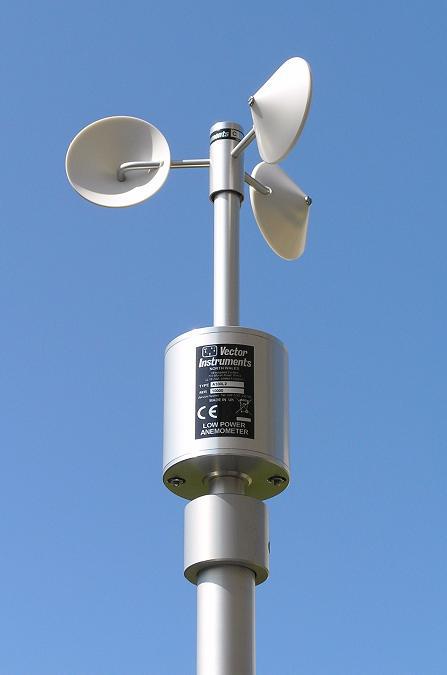The Duty of an Anemometer in Improving Safety And Security for Outdoor Activities
The Duty of an Anemometer in Improving Safety And Security for Outdoor Activities
Blog Article
Anemometers Revealed: Comprehending Their Relevance in Ecological Tracking and Precaution
The role of anemometers in environmental surveillance and safety and security procedures is often taken too lightly, yet their importance is undeniable. From meteorology to aviation safety and security, anemometers play a vital duty in supplying precise information that notifies decision-making processes and enhances overall safety.
History of Anemometers
The advancement of anemometers can be traced back to the old people where primary wind determining gadgets were first utilized. One of the earliest well-known anemometers was the hemispherical mug anemometer invented by Leon Battista Alberti in the 15th century.
In the 18th century, the popular scientist John Thomas Romney Robinson presented the Robinson anemometer, which featured four hemispherical cups mounted on horizontal arms that expanded from a main axis. This style came to be a requirement in atmospheric dimensions due to its precision and integrity. Over the years, improvements in modern technology brought about the development of even more contemporary anemometers, including ultrasonic anemometers and laser Doppler anemometers, providing boosted precision and efficiency in determining wind rate and direction. The history of anemometers showcases an impressive journey of innovation and progression in the area of weather forecasting.
Kinds of Anemometers
Throughout the area of weather forecasting, various kinds of anemometers have been developed to precisely measure wind speed and instructions. The most typical type is the mug anemometer, which consists of 3 or four mugs placed on straight arms that rotate with the wind. As the mugs spin, the speed at which they revolve is directly symmetrical to the wind speed. Another extensively made use of kind is the vane anemometer, which includes a tail or fin that straightens itself with the wind instructions. This positioning permits the device to establish the wind direction. Sonic anemometers make use of ultrasonic signals to determine wind rate and direction accurately. They are generally made use of in research study applications as a result of their high precision. Hot-wire anemometers run based upon the principle that the cooling impact of wind on a warmed cable is symmetrical to the wind speed. These anemometers are appropriate for gauging low wind speeds with high accuracy. Each sort of anemometer has its toughness and is picked based on the specific demands of the tracking job handy.
Applications in Weather Forecasting
Having talked about the numerous sorts of anemometers made use of in meteorology for determining wind rate and instructions, it is vital to explore their useful applications in the field. Anemometers play an important role in meteorology by providing real-time and exact data on wind conditions (anemometer). Meteorologists make use of anemometers to check wind speed and instructions to forecast climate patterns, concern cautions for serious climate events like storms, hurricanes, and hurricanes, and assess weather for aviation safety and security
In meteorology, anemometers help in understanding regional and regional wind patterns, which are vital for predicting weather condition changes and figuring out climatic trends. These gadgets are additionally utilized in research study to examine microclimates, city warmth islands, and air pollution diffusion. Furthermore, anemometers are used in agriculture to optimize plant management methods, such as watering and chemical application, based upon wind problems.
Value in Aviation Security
An integral facet of making certain air travel security exists in the careful monitoring of wind conditions using anemometers. Anemometers play an important duty in aeronautics by giving real-time information on wind speed and instructions, helping pilots in making notified decisions during landing, liftoff, and trip. Strong and unpredictable winds can significantly impact airplane procedures, making it important for aeronautics authorities to count on exact wind dimensions to guarantee the security of travelers and crew.

In the dynamic environment of aeronautics, where even small changes in wind rate and instructions can have profound impacts, anemometers stand as crucial tools for advertising secure and risk-free air traveling.
Role in Environmental Research Study
Anemometers play a vital duty in ecological study by giving essential data on wind speed and instructions. By properly gauging wind characteristics, anemometers aid scientists assess the activity of toxins in the see this air, analyze the influence of commercial discharges, and anticipate the spread of pollutants in the environment.


Final Thought
In verdict, anemometers have actually played an essential duty in ecological monitoring and safety and security procedures. Understanding the value of anemometers is necessary for accurately gauging wind speed and instructions, which is important for forecasting weather condition patterns, ensuring risk-free aviation procedures, and conducting ecological studies.
One of the earliest recognized anemometers was the hemispherical mug anemometer created by official source Leon Battista Alberti in the 15th century. Over the years, advancements in innovation led to the development of more modern-day anemometers, including ultrasonic anemometers and laser Doppler anemometers, using increased precision and performance in measuring wind rate and instructions. Hot-wire anemometers operate based on the concept that the cooling result of wind on a heated cord is proportional to the wind rate. Meteorologists use anemometers to keep an eye on wind rate and direction to anticipate climate patterns, issue warnings for serious weather condition occasions like storms, hurricanes, and tornadoes, and assess climatic problems for air travel safety.
Recognizing the importance of anemometers is necessary for properly determining wind speed and instructions, which is vital for anticipating weather patterns, making certain secure air travel procedures, and conducting ecological research studies. (anemometer)
Report this page